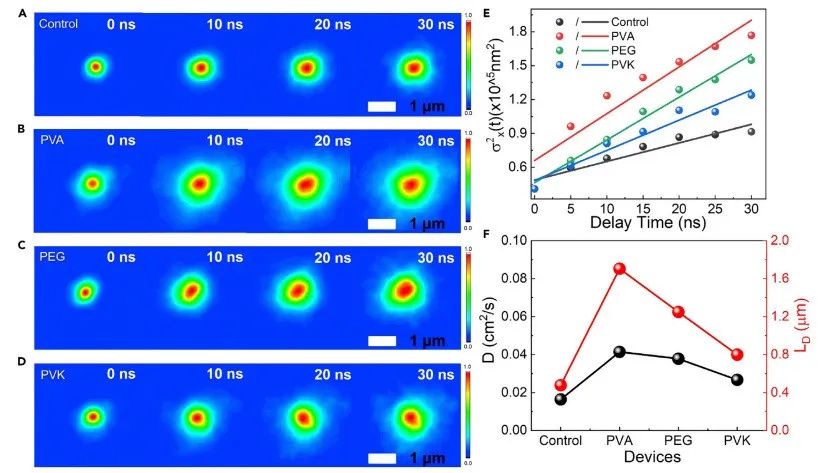Ultrafast Transient Absorption Spectroscopy Microscopy System
Time-Tech Spectra Micro-area Reflection|Fluoroscopy|
Surface modification of the active layer of calcium titanite solar cells (PSCs) is often done using a tedious trial-and-error procedure. Therefore, there is an urgent need for a guide for the rational selection of passivation functional groups for polymer structures, which is very effective in passivating charged defects and extending device lifetime. Here, three prototype polymers, poly(vinyl acetate) (PVA), poly(ethylene glycol) (PEG) and poly(9-vinylcarbazole) (PVK), were chosen to investigate the structural effects of polymer modifiers on PSCs. It was found that PVA has the smallest spatial site resistance and the strongest electron-giving Lewis base functional group, achieving the most effective defect passivation and the most enhanced carrier diffusion ability on the surface of the chalcogenide films. It obtained a conversion efficiency (PCE) of 23.20% and enhanced stability.


The data of this figure were obtained with the aid of an ultrafast transient absorption microscopy system.
Authors:Minhuan Wang,Yepin Zhao,Xiaoqing Jiang,Yanfeng Yin,Ilhan Yavuz,Pengchen Zhu,Anni Zhang,Gill Sang Han,Hyun Suk Jung,Yifan Zhou,Wenxin Yang. Jiming Bian,Shengye Jin,Jin-Wook Lee,Yang Yang Yang
Institutions: Dalian University of Technology, University of California, Los Angeles, Dalian Institute of Chemical Engineering and Sungkyunkwan University, Korea
Published: April 29, 2022
Journal: Joule
Keywords: perovskite solar cell, surface modification, interface, steric hindrance, stability
Article source website.Rational selection of the polymeric structure for interface engineering of perovskite solar cells
Time-Tech Spectra Micro-area Reflection|Fluoroscopy|